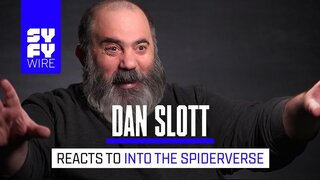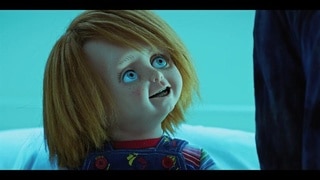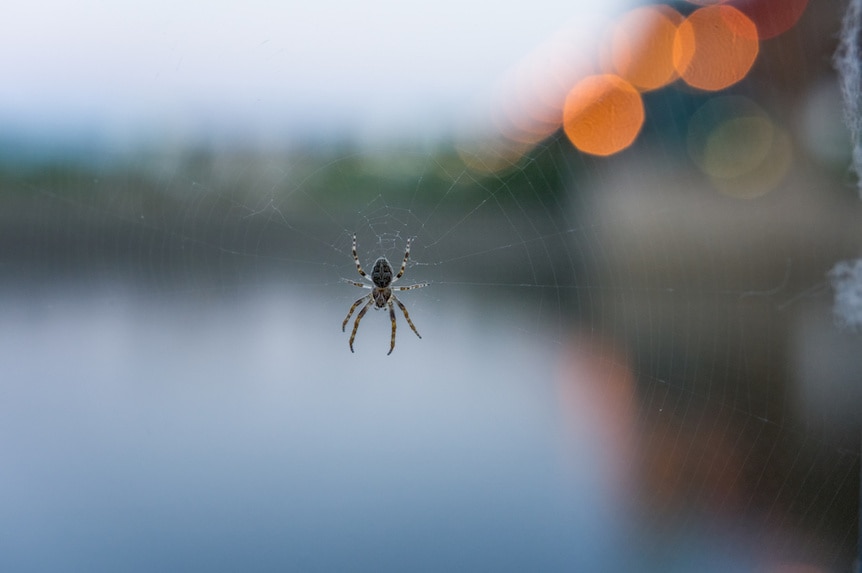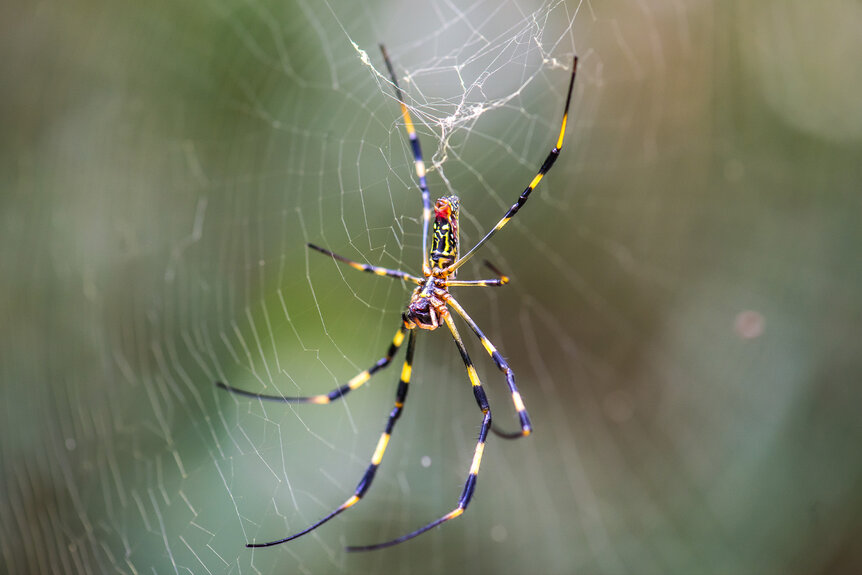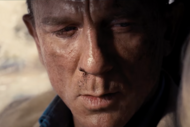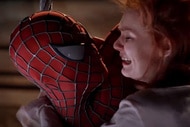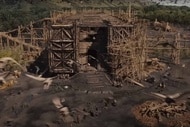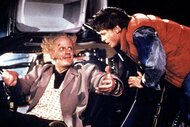Create a free profile to get unlimited access to exclusive videos, sweepstakes, and more!
Why Sam Raimi’s Peter Parker Should Have Eaten His Webs
He's got to be so hungry!
In 2002, the friendly neighborhood Spider-Man burst onto the big screen in Sam Raimi’s appropriately titled Spider-Man (now streaming on Peacock). It made nearly a billion dollars during a time when superhero media didn’t have the cultural cachet it does today, and it was the definitive live action interpretation of the character until Andrew Garfield and Tom Holland took a swing in Peter Parker’s webbed tights.
Raimi’s narrative begins while Parker (Tobey Maguire) was still a normal kid just trying to survive high school. We see him get bit by a scientifically modified spider, then we watch as he acquires and struggles with supernatural abilities imagined in the comics by Steve Ditko and Stan Lee more than half a century ago.
Like his page-bound counterpart, Parker gets increased strength, enhanced senses, and the ability to crawl walls. He also gets something extra. Raimi’s Spidey makes one big departure from the source material. Instead of mechanical web shooters, he produces webs from his body through a wrist-mounted-spinneret mutation. According to screenwriter David Koepp, credit for the organic web shooters goes to James Cameron. Koepp lifted the idea from a script treatment Cameron wrote years before the 2002 movie was made.
Fans were divided on the decision to give Parker organically produced webs. They were so distracted in fact that they forgot to ask the question that really mattered: Why doesn’t Spider-Man eat his webs when he’s done with them?
For More on Spiders:
Do Spiders Have Nightmares? New Evidence Suggests They Sleep and Dream
Necrobotics: How Scientists are Using dead Spiders as Corpse Claw Machines
Silkworm-Spider Hybrids Spin Bulletproof Silk
Some Spiders Eat Their Webs
All spiders produce silk, but they don’t all use it in the same way. Some build underground dens to call home when they’re not prowling for snacks. Some use silk to make parachutes, catch the wind, and travel vast distances. Some use it to trap a bubble of air and go scuba diving. Others, of course, build webs to catch prey.
Garden orb weavers, the quintessential web-building spiders, build massive nets of nearly invisible sticky thread for snatching insects. Those webs are good at their jobs but they’re undiscerning. They’ll catch the wind, the rain, or a bit of pollen just as readily as they’ll catch a fly. Pretty soon they’re torn and dirty, like chewed gum dropped on the carpet, and they don’t work as well.
They do most of their catching at night when the flying creepy crawlies are most out and about, and their webs are wrecked by sunrise. They spend the day tearing the web down and building a new one from scratch. Building a house is difficult work, doubly so when all of your building materials come out of your body. Some orb weavers get around the constant calorie loss by recycling resources. Eating the old web means the proteins can be biologically refurbished and put back to work.
Spider-Man Slings Webs Like a Garden Orb Weaver
While Parker was snapping photos during a school field trip, he was bitten by an escaped Steatoda grossa, a false widow (painted with Spidey’s trademark colors). It looked good, just the right kind of creepy, the sort of spider that looks like it might actually give you superpowers. In reality, it isn’t the webbiest of spiders.
S. grossa is a cupboard spider, the sort of arachnid you’ll find living in a cobweb in your crawl space. They’re adapted to live alongside humans, they like to keep indoors where they don’t have to worry so much about pollen, wind, and rain. Their webs don’t get wrecked so often, which means they don’t have to rebuild them as often, which means they don’t have to eat them.
Spidey, by contrast, is out there swinging from skyscraper to skyscraper and wrapping up burglars for the authorities to find. He isn’t building a den or a single web to live in forever, he’s pumping out massive amounts of webbing from each wrist day after day. Regardless of who bit him, Parker’s webbing habits are most closely analogous to a garden orb weaver, building a new house every single day.
If Parker wants to maintain his newly acquired chiseled physique, he’s going to need the calorie balance to tip in his favor, and the quickest way to make that happen is to eat his webs. It isn’t going to be glamorous, but at least he can keep the top half of his face covered while he chows down on the day’s silky snacks.
Catch Sam Raimi’s entire Spider-Man trilogy streaming on Peacock!
